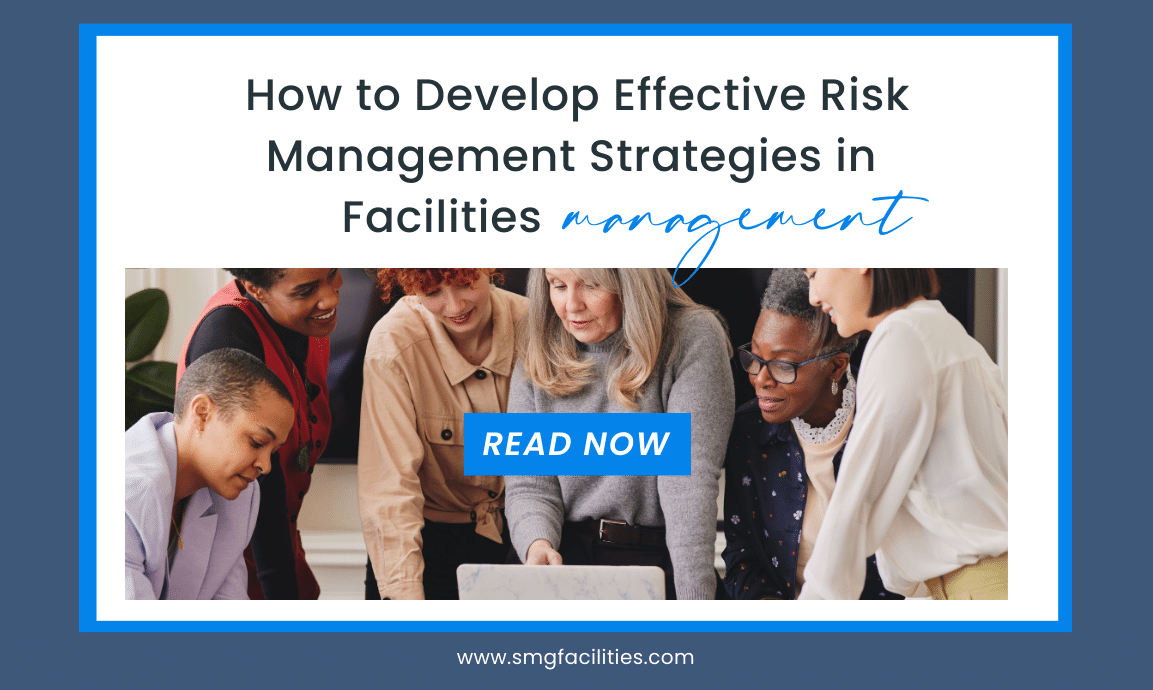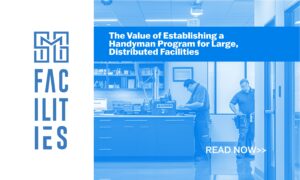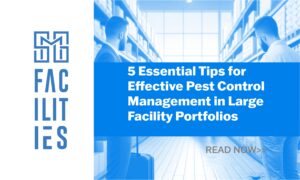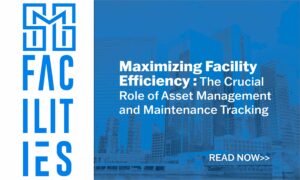Risk management should play a vital role in facilities management because it allows companies to identify and solve potential problems before they occur or to have a policy of preparedness if they do appear. Among the concerns in facility risk management are structural weaknesses, faulty equipment, cyberattacks or data breaches, financial dealings, and overall worker health. Facilities professionals might gloss over risk management because they are dealing with immediate concerns — but they should not ignore something that often focuses on the future or the “what if” situations that can turn disastrous. They should consider facility risk management a substantial cost-saving opportunity because a correctly implemented risk management plan can prevent costly losses.
Over the rest of this blog, we will offer up the many benefits facility risk management can bring to your company, as well as cover topics such as identifying and assessing risks, types of risk strategies, and developing contingency plans.
Benefits of Using Risk Management
Some of the benefits of facility risk management are already rather evident, but others are not as obvious. Here are five key ways risk management makes your company stronger and your team members feel better:
Minimize Disruption
Part of the beauty of risk management is that, if done correctly, it can either eliminate a problem or allow everyone to be prepared to handle it when it happens. No one wants surprises. There is enough stress in most jobs already. Taking the bull by the horns early allows for greater awareness in the concerned area and means the right people can be lined up to mitigate the problem if it arises or becomes a much more serious concern. Risk management can quickly become another way to keep an already efficiently run company on the right path.
Ensure a Safe Work Environment
Risk management goes hand in hand with health and safety. There are often regulations that need to be followed when it comes to both health and safety, but a facilities professional should be proactive in going beyond the regulations to make sure the working environment is in good shape. Actively seeking out ways to mitigate risk and addressing potential areas of concern shows employees that the company is thinking about them. In the long run, it can also be an excellent economical decision because it might save the company money if an accident requires medical care or generates possible litigation. Data analysis identifies loss and injury trends and inspires ways to prevent them from reoccurring.
Improving Lines of Communication
By having everyone involved in knowing and implementing the policies that reduce risks, the communication lines are already in place when a concern arises. Conversations are elevated because no one wonders about their role in mitigating the problem. They have already discussed complex topics and how to deal with potential conflicts. Service Providers may also be involved in the conversations because risk responses often touch on activities that concern them and extend your company’s positive working relationship with them.
Saving Money in Multiple Places
While risk management does come with some costs on the front end of projects, it is likely to be made up and then some by avoiding costly services and procedures that are needed to correct a problem that could have been prevented by sound risk management. These costs may often run into thousands of dollars and, in some cases, millions. Also, with trend analysis, facilities professionals can spot recurring concerns they can minimize to reduce repetitive losses. It is also prudent for managers to become well-versed in the precarious areas where the procurement of insurance should be purchased to offset any severe financial impact.
Streamlining the Reporting Process
When there are incidents, there are incident reports. With the help of risk management, incidents are often reduced. Employees don’t need to spend time submitting data; if there is an incident, they know the process and that the risk management team will handle the documentation. They alleviate the burden of tedious data submission by workers taking time from their true roles. Everyone will see how risk management is worth the return on investment (ROI).
How to Identify and Assess Risks in Facilities Management
The first two steps in the facility risk management process are identifying and assessing the risks. Facilities professionals should put together a list to use while conducting an extensive risk management assessment to identify the risks and to what extent the damage would be. Here are some of the concerns to have when doing an evaluation:
- Essential systems – electrical, lighting, guest services, water, etc.
- Equipment – where damage to a particular part could shut down or disrupt commerce.
- Approximate disruption time resulting from damage to a process.
- Anticipate cost(s) for a repair if an issue emerges.
- The most straightforward approach to take in dealing with the item and avoiding a recurrence.
- Accessibility to the damaged equipment.
- Fines or penalties managers could incur if damaged equipment is not repaired..
- Environmental factors that could impact the equipment’s performance and overall safety.
The risk assessment should also use data-based systems to help analyze the possible impact of issues. For instance, what would be the approximate cost savings between the proactive risk management implementation that allows the item to continue working effectively and the unanticipated outlay of money if a critical piece of equipment or system were to suffer a major breakdown?
In a perfect world, a company’s facility risk management team would be prepared for all concerns and threats and have done everything possible to avoid them from happening. The other part of the risk management plan is to be ready if the worst happens. Risk mitigation strategies assist in preparing for unpredictable calamities by knowing there will be some form of damage and putting systems in place to respond to that. There are four types of strategies for risk mitigation:
- Risk avoidance: If the damage and ramifications of an event are seen as too extensive to justify the cost of mitigating the problem, then the strategy would be to avoid them. A company, feeling that certain practices might expose it to a threat, might opt to avoid those practices rather than risk any chance of a negative impact. Or a company might not build future facilities in potentially volatile areas.
- Risk monitoring: When a company keeps a close eye on a project for any changes in the risks that might be associated with it and then draws up a mitigation plan if the concerns heighten.
- Risk acceptance: When the risk in question is not as high on the priority list as other concerns, the company does not take any mitigating action on that risk.
- Risk transfer: Shifting any risk-related action to another party involved in the maintenance of critical equipment or overall service of that equipment.
Developing Contingency Plans
Unexpected events come in two different types. One way is the rare event that causes major damage. Earthquakes, hurricanes, tornados, fires, and even something like the COVID-19 pandemic are all examples of this. The second type is the more common event that causes minor problems. Think of an internet outage or a water leak in one of the facilities.
Both need to be assessed closely and ranked by their severity and chance of occurrence. When contemplating a contingency plan, there are a number of questions you should ask:
- What steps must be taken to get the facility back up and running?
- What is the estimated time it will take for the facility to resume operations?
- Will there be a safe workplace, or will team members be able to work remotely?
- What is the extent of the property damage?
- Has the data been backed up, and how can it be retrieved?
- Will the company’s reputation or “brand” be affected?
The next step is devising a response plan with clear, detailed instructions for each possible scenario. Then, train workers on what they will need to do in their respective roles if one of these unexpected events occurs. A simple but practical example: Ensure team members know the locations of all exits in case of a fire.
With SMG, You Can Catch Lightning in a Bottle
Unexpected events are something no one wants to discuss. But broaching that subject can be made much easier with an excellent facility risk management plan. The benefits of having a plan and following through on it are numerous, from cost savings to safer conditions to not having the stress of being unprepared for those events. It’s a three-step process:
- Identify and assess the risks.
- Formulate a plan to proactively manage them.
- Prepare as best you can for the ones that come unexpectedly.
This approach will make life a lot easier for facilities professionals and their teams when lightning does strike, sometimes even literally.
If you need help mitigating risk across your distributed portfolio, the experienced team at SMG Facilities can help you through any part of the facilities management process. SMG’s vanguard service and support provide innovative solutions that use actionable data to prepare you for just about anything. There is no risk in trying us out; we guarantee 100% resolution, so visit our website today.

